By visiting our site, you agree to our privacy policy regarding cookies, tracking statistics, etc. Read more
- Case Studies
- Get in touch

Greggs: an agile approach to strategy & business model thinking
John Gregg founded his bakery business in 1939, selling eggs and yeast from his bicycle in Newcastle. The business grew, and his son Ian joined his father and mother, selling pies from his van to miners’ wives. They opened their first shop in Gosforth in 1951.
When John died in 1964, the bakery was taken over by Ian, and major expansion began, including the acquisitions of other bakeries such as the Bakers Oven chain from Allied Bakeries in 1994.
Greggs grew to be the largest bakery chain in the UK, home of the bacon sandwich and a coffee for two quid special offer which, disappointingly, is now £2.10 (a friend told me, honestly), famous for pies and pasties and everything you firmly resolved on December 31 would never touch your lips again.
A couple of years ago, Greggs fell victim to adverse PR about its product range and customer base. Oh how the Prêt crowd sniggered into their avocado and crayfish salads. Yet plucky old Greggs just got its head down and kept growing. ‘It’s a northern thing’ no longer serves as an explanation. The patronising notion that Greggs’s popularity is inversely proportional to the nation’s economic fortunes also fails to explain its steady expansion.
Today Greggs generate £1m a week from sales of coffee. It has repositioned the brand from an ordinary bakery-to-take-home to a high growth food-on-the-go entity, meeting changing customer demands and evolving food culture.
A new strategy was introduced in 2013 under CEO Roger Whitehouse, formerly Head of M&S Food, which focused on four pillars: Great tasting freshly prepared food; best customer experience; competitive supply chain; first class support teams.
Whitehouse introduced a ‘restless dissatisfaction’ approach to compliment the traditional business values, ensuring the business would never stand still after recovering from a period of stagnation. He implemented some radical changes, including closing the in-store bakeries, and introducing the ‘Balanced Choice’ range of products with less than four hundred calories, healthier options to the traditional product range.
And it’s worked. Having launched the first vegan sausage roll in January, last week the company announced a 50% rise in profits to £40.6m in the first half of 2019. The business is handing shareholders a £35m special dividend after total sales rose 14.7% to £546m.
In 2016, Greggs weren’t in the takeaway breakfast market but now only McDonalds sells more takeaway breakfasts. With a Fairtrade Expresso, it has overtaken Starbucks to become the third-largest takeaway coffee seller, behind Costa and McDonalds, while only Tesco sells more sandwiches.
So what are the lessons from the success of Greggs changing its business strategy and model that we take into our startup thinking?
1. Be agile in how you connect with customers
Greggs expects to pass 2,000 outlets this year, 65% are on high streets, with the remaining 35% located in retail and office parks and in travel locations such as railway stations and petrol forecourts. The aim is to change the emphasis of the business so that it is 60% non-high street by the time it has 2,500 shops.
Part of this is having many of its stores open earlier and close later, in order to target those going to and coming back from work, expanding its breakfast menu to suit, and with ‘Greggs à la carte’ stores to open late to 9pm to lure evening takeaway diners.
As well as its new drive-through locations, the company is trialing a click-and-collect service, as well home and office delivery by Just Eat and Deliveroo. They aim to integrate click-and-collect and delivery services with the company’s Greggs Rewards app, which offers free drinks and birthday treats.
Greggs has previously failed with new ideas such as Greggs Moment , a coffee shop-style outlet with seating, and the Greggs Delivered service, which is only available in Newcastle and Manchester city centres, three years after it launched. However, the business is now at a scale where it can experiment without too much risk.
Takeaway: Greggs route to market strategy is to based on expanding their reach to enhance customer convenience, a ‘fish where they swim’ strategy, reducing the barriers between themselves and their customers, uplifting the customer experience and making the ability to connect and purchase convenient.
2. Build your brand to face your market
Greggs has in recent years persistently bucked the wider trend on UK high streets, where most retailers are struggling to compete as sales shift online and the cost of running stores rises.
In 2013, Greggs began to transition out of the bakery market with the reasoning that it couldn’t compete with supermarkets, switching to focusing solely on the ‘food on the go’ market after discovering that 80% of its business was with that market. They stopped selling bread in 2015.
Greggs has worked hard at getting consumers to think about it as a food-on-the-go chain, developing ideas such as online ordering for collection and home delivery, developing strategic partnerships with their supply chain to focus on the four key pillars of their strategy.
They are more in touch with where the customers are today. It has managed to cater to new markets without being overly ambitious. The builder can still come off the building site and get a hot pasty, but there are also salads. The decor is still recognisable even if it has been upgraded and the older traditional customers still feel comfortable.
Takeaway: Many businesses want profit as their objective. But if you only focus on short-term wins and results, you get distracted from doing the work required to build the skills you need to grow and scale, and it’s the ability to scale that matters. The process is more important than the outcome at early stages of a change of strategy. Focus on getting good before you worry about getting big.
3. Look forwards, not backwards with your product offering
Greggs sells 1.5 million sausage rolls a week but created the new vegan option due to public demand after an online petition signed by 20,000 people. In recent years Greggs has been innovating within its product range to appeal to a broader range of customers. Its ‘Balanced Choice’ healthy eating range, introduced in 2014, offers options including wraps and salads, all below 400 calories. It also sells gluten-free and several vegan lines.
The company also believes it can take advantage of rising demand for food ‘customisation’, driven by allergies and ‘food avoidance’ preferences, and its stores now make sandwiches to request.
One in eight new customers have bought a vegan sausage roll in 2019, which has overtaken doughnuts and other pastries to become a bestseller. The traditional sausage rolls remain at number one – with its 96 layers of light, crisp puff pastry – but there are more vegan products in development, including a vegan doughnut. It’s worked, such that Ginsters released their own vegan product for the first time in its 52-year history.
Takeaway: Greggs has been bold in its response to the adverse publicity on its offering and changing food culture. Aligning your product strategy with a focused brand image and route to market is core to any business model.
4. Be clear about your marketing message & tone of voice
Before the Greggs vegan sausage rolls went on sale, TV presenter Piers Morgan sent out a tweet: Nobody was waiting for a vegan bloody sausage, you PC-ravaged clowns. The tone of the company’s response: Oh hello Piers, we’ve been expecting you – friendly but with a slight edge, was perfectly attuned to the ironic, self-confident marketing Greggs has adopted, a James Bond-inspired, droll putdown that was the perfect riposte.
Their hilariously portentous launch video – part of a build-up that parodied the release of a new iPhone model with journalists sent vegan rolls in mock iPhone packaging and stores sold sausage roll phone cases – meant that for days Twitter was engulfed with people talking about a £1 bakery product.
The vegan sausage roll campaign, officially launched to support the Veganuary campaign that encouraged people to give up animal products for a month, followed other memorable promotions include a Valentine’s Day campaign offering ‘romantic’ £15 candlelit dinners in Greggs shops, and a spoof ‘Gregory and Gregory’ event, and one faux pas: a 2017 advent calendar tableau of a sausage roll in a manger. After complaints Greggs apologised and reprinted with a different scene featuring Christmas muffins.
Takeaway: Greggs found its distinctive marketing style in 2012, when it saw off then-chancellor George Osborne’s proposed ‘pasty tax’ on hot takeaway food. Since then it has been consistent in its purposeful, structured and memorable content driven communication strategy, making the brand relevant to its target audience and differentiating its offering in an increasingly competitive market to reposition the brand.
5. Don’t let your business model become stale
Innovation can be about efficiency. Look at Ikea, and The Billy bookcase. It’s a bare-bones, functional bookshelf if that is all you want from it. The Billy isn’t innovative in the way that the iPhone is innovative. The Billy innovations are about working within the limits of production and logistics, finding tiny ways to shave more off the cost, all while producing something that does the job. It demonstrates that innovation in the modern economy is not just about snazzy new technologies, but also boringly efficient systems.
The Greggs shop environment has been improved and significant investments made in logistics and delivery systems to make them more efficient and scalable. In-store ordering moved to a centralised forecast and replenishment system rather than relying on shop teams filling in manual order forms, which resulted in order accuracy and improved availability for customers.
All shops are on a refurbishment programme (every seven years) to ensure they stay looking bright and welcoming. In-store point of sale and window displays remain key to Greggs’ marketing strategy, however, a loyalty app was also introduced.
Takeaway: innovation in Greggs is about efficiency, economy and effectiveness, searching for ways to make their products even better and affordable for their target market. A ‘back to basics’ focus on the business model reflects the culture and humility of the brand. Combined with brave decision making to implement change and execution in a consistent, simple and continuous manner has delivered the results.
6. Ensure your folks keep clear heads
Amidst the hullaballoo and the fury of the frantic activity in the coming and going of customers at busy times, staff have to keep a clear head. In the heat of the moment, they cannot get caught up in the intensity and frenzy. Resilience in times of peak demand is needed to keep the customer experience as fresh and stimulating as the steak bakes.
When you go to a Greggs, the staff are so engaged in what they do its untrue, they are like whirling octopus serving customers, and they do it with good humour, bantering with regulars, enjoying the success of seeing returning customers, before going again.
With 10% of profits going to the Greggs Foundation to help fund Breakfast Clubs for children and over £1m raised annually for Children in Need, the vegan pastry has helped change the perception of Greggs, but fundamentally it’s a people business, about delivering service, experience and the community it operates.
Takeaway: So, focused on a simple, core value proposition – reasonable quality food at reasonable prices, consistently produced and scaled – but the fundamental premise is to make customer experience the brand differentiator.
Many takeout food companies are head-on competition to Greggs, but due to its focused marketing strategies highlighting choice, quality, nutrition & easy access, the company is able to create sustainable advantage.
Changing lifestyles, changing eating habits and increasing health awareness factors are affecting the growth of the companies in this industry. Greggs has set its strategy from a customer’s point of view and with customer-based insights, to ensure the business model is as robust as it can be.
Adopt Greggs’ agile approach to strategy and business model thinking, to focus on the horizon and hold your vision. Do something everyday to move your business forward, and that makes you stand out from the crowd. A sheep has never stood out from another sheep, so don’t follow the herd blindly. People will take notice.

Ian Brookes
The founding father of tsf.tech, Ian has spent the last decade working as a co-founder, investor and board member/advisor with a number of tech businesses and startups, with hands-on fundraising experience of c£64m via PLUS, AIM, FTSE and VC/PE.
More insights from the team
Lessons in entrepreneurship from thomas telford, the innovation mindset of alan turing, we’re ready to talk....
Wherever you are on your startup journey, get in touch and let’s unpack your thinking together and see where we can help turn your idea into a reality.
Greggs: The Strategic Issues Analysis Case Study
Introduction.
Greggs is a popular business in the United Kingdom since it provides customers with high-quality food. The business has a rich history explaining how the company overcame various challenges. The current environment also offers many issues that should be properly managed. That is why the given report assesses strategic issues of Greggs and focuses on the internal and external conditions that determine how the organization develops.
Strategic Issue Diagnosis
Business issues.
The given company represents the UK food-on-the-go industry, and it is reasonable to consider its life cycle. The field has a vast history and was experiencing a dramatic increase pre-pandemic. For example, the UK market was worth £18.9 billion in 2019, but the crisis led to its estimated value of £15.6 billion in 2021 (Heath par. 2). That is why the industry is currently facing an economic downturn resulting in financial losses for individual businesses.
The life cycle of the selected organization also deserves attention. The company emerged 80 years ago when John Gregg started delivering fresh eggs and yeast by pushbike (Greggs, “Our History” par. 1). The first shop was opened ten years later, and it gave rise to a large system, including almost 2,000 stores today (Greggs, “Our History” par. 4). Throughout its history, Greggs attempted to satisfy customers’ needs and expectations, which explains the development of a vegetarian menu, free Wi-Fi, and so on (Greggs, “Our History” par. 2-3). This information demonstrates that the organization is ready to make strategic decisions to promote growth.
Cultural Issues
The cultural web is a helpful tool that relies on numerous elements to assess Greggs culture. Firstly, the Stories component reveals that the organization positions itself as a major employer and a provider of healthy food, while ordinary citizens appreciate it. Secondly, Greggs relies on many symbols to establish and distribute its cultural values. In particular, the company uses unique stores interior and exterior design, customized packages, and specific gift cards. The organization invests in marketing, meaning that Greggs advertisements appear at cars and on streets. Thirdly, routines and rituals represent the accepted norms and practices governing the workforce. The company has regular meetings for the board of directors, while rituals are developed for ordinary employees (Greggs, “People” par. 3-8). For instance, the business provides individual workers with a rewarding system, training and growth opportunities, and an equal environment.
Fourthly, the organization relies on a specific control system to ensure that employees correctly perform their duties. Greggs provides its workers with competitive salaries and shares a part of the overall profits with them (“People” par. 5). Fifthly, the company’s power structure is represented by the board of directors, including eight highly skilled and experienced professionals. Finally, the business’s organizational structure consists of a few departments, each of which is responsible for a particular business area. This information concludes that Greggs is an example of task culture. The rationale behind this statement is that the organization is divided into departments, i.e., teams, and each of them is expected to solve issues within its responsibility area. All the teams and their members join their efforts to contribute to the business development.
Political/Governance Issues
Greggs has two groups of stakeholders, including internal and external ones. Internal stakeholders are employees and executives, while customers and suppliers represent outside ones. A mapping activity allows for identifying the meaning of these groups and how the business should address them. Executives have high interest and power, meaning that they should receive the most attention. Suppliers have low interest and power, and the company should monitor them. Low interest and high power characterize customers, and Greggs should keep them satisfied. Finally, employees feature high interest and low power, denoting that the organization should keep them informed.
A principal-agent issue emerges when it is necessary to hire new employees. Since managers cannot have exhaustive information about candidates’ performance, their hiring involves risks that can affect the entire organization. The organization tries to minimize these hazards and ensure all the employees effectively engage in performing their obligations. Competitive salaries and additional bonuses serve as an effective motivation for workers.
In addition to that, Greggs draws significant attention to corporate social responsibility. In 2021, it announced “The Greggs Pledge,” highlighting the objectives and positive changes that the business wants to achieve. In particular, the company advocates for stronger and healthier communities, promises to establish a carbon-neutral and zero-waste business, promotes diversity, and establishes sustainable operations (Greggs, “The Greggs Pledge” 4). These goals demonstrate that the organization understands its social responsibility and does its best to improve the world.
External Analysis
Macro level issues.
The PEST analysis is helpful since it can reveal what specific political, economic, social, and technological forces affect the business. Firstly, the UK government is serious about food safety, meaning that Greggs should satisfy such standards to operate within this environment. Secondly, economic conditions significantly deteriorated when the COVID-19 pandemic shocked the world. The organization lost a significant part of its revenues and is currently struggling to reach pre-crisis levels. Thirdly, social forces are positive for Greggs because the organization has high brand awareness, and customers positively assess it. Fourthly, the company benefits from technological achievements because free Wi-Fi and online marketing tools attract more customers. Macro-level scenarios imply that the organization should use its internal and external strengths to mitigate adverse impacts of political and economic issues.
Market and Industry Analysis
Greggs relates to the strategic group of fast-food restaurants, meaning that the business should prioritize specific values. For instance, they are timely service, an efficient supply chain, and a professional workforce. Greggs offers products for the middle class, including representatives of all races, genders, and ethnicities. Simultaneously, the Five Forces analysis demonstrates that the organization’s position in the industry is challenging. The threat of new entrants is not high, but Greggs still has to invest in innovation and growth to have an advantage over new players. The bargaining power of suppliers is medium, and the organization should diversify its supply chain and cooperate with multiple partners to mitigate risks. Buyers have a significant force in the market, and Greggs should continue increasing its customer base to protect long-term development. The threat of substitutes is rather high, and the company should offer high-quality services and products to address it. Finally, Greggs should differentiate its brand to compete with numerous rivals.
Environment-Organization Fit
The selected company does its best to ensure that it positively affects the environment. Greggs scans for its impact on nature and develops specific goals to minimize this harm. In particular, the business announced that it would use less packaging, reduce carbon emissions, and decrease the amount of waste (Greggs, “The Greggs Pledge” 4). However, the company does not mention that it relied on Big Data and analytics to address the issues.
Internal Analysis
Sbu analysis.
The organization consists of a few strategic business units, and thye join their efforts to create a value chain. In particular, there are three committees, including the audit, remuneration, and nominations ones (Greggs, “Board Committees”). Simultaneously, the Chief Executive Officer presides over the operating board with its responsibilities. The given value system implies that these bodies are responsible for different activities that are performed to ensure that Greggs can adequately offer service and products to customers.
Organizational Architecture
The previous section has already commented on what committees are involved in Greggs management. However, it is now reasonable to comment on what relationships exist among individual bodies. Horizontal links have occurred among the committees that are subordinate to the board of directors (see fig. 1). The synergy among all these establishments results in the fact that the business has a rather effective and clear organizational architecture.
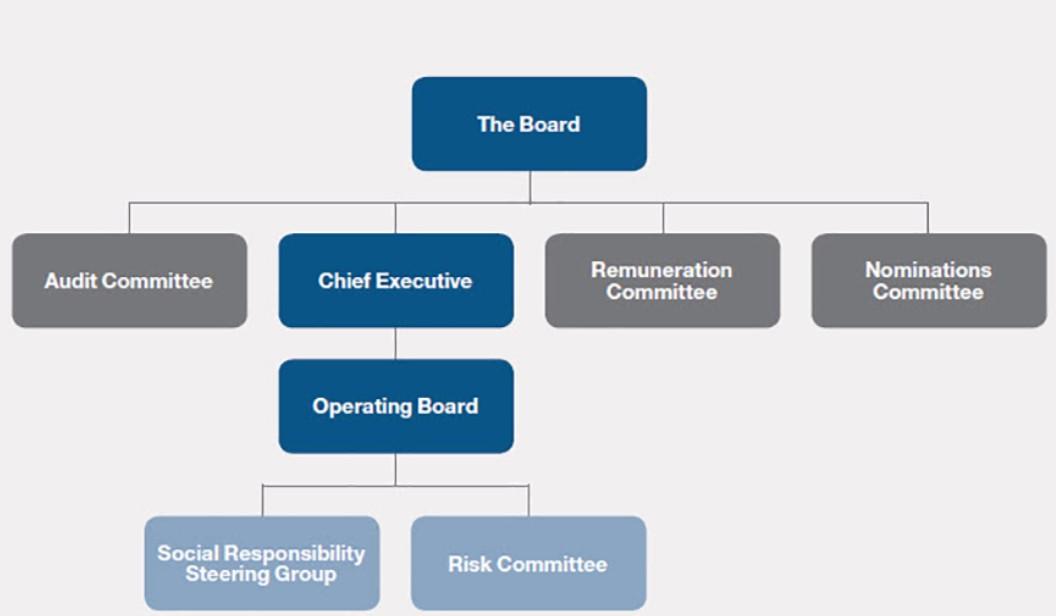
Financial Resources
Financial analysis of the business reveals mixed results that deserve attention. On the one hand, the company’s financial report demonstrates that the 2021 total sales increased to £1,229.7 million from £811.3 million in 2020 (Greggs, “Annual Reports” 1). However, the price-to-earnings ratio is 20.82, which is significantly lower compared to the average industry value (Investing.com). These findings reveal that both positive and negative features can be found.
Integrative Internal Analysis
Greggs has a few generic strengths that allow it to withstand the crisis. Drawing attention to workforce training and development is one of them. Since the company has a skillful workforce, it can easily overcome different challenges. In addition to that, this characteristic feature provides the organization with numerous capabilities to develop and grow. Consequently, Greggs should invest more resources to attract and retain experienced employees.
The report has presented an analysis of Greggs as well as its external and internal environments. The COVID-19 pandemic brought many challenges, and the company was forced to deal with versatile consequences. However, the findings reveal that the organization has sufficient resources to mitigate the challenges. In particular, social and technological conditions, as well as an experienced workforce, provide Greggs with effective resources to keep developing.
Works Cited
Greggs. “Annual Reports and Accounts 2021.” Web.
“Board Committees.” Web.
“Our History.” Web.
“People.” Web.
“The Greggs Pledge.” Web.
Heath, Kim. “Will the UK Food-To-Go Market Get Back to Growth Post Pandemic?” AHDB, 2022.
Investing.com. “Greggs PLC.” 2022.
- Chicago (A-D)
- Chicago (N-B)
IvyPanda. (2023, July 17). Greggs: The Strategic Issues Analysis. https://ivypanda.com/essays/greggs-the-strategic-issues-analysis/
"Greggs: The Strategic Issues Analysis." IvyPanda , 17 July 2023, ivypanda.com/essays/greggs-the-strategic-issues-analysis/.
IvyPanda . (2023) 'Greggs: The Strategic Issues Analysis'. 17 July.
IvyPanda . 2023. "Greggs: The Strategic Issues Analysis." July 17, 2023. https://ivypanda.com/essays/greggs-the-strategic-issues-analysis/.
1. IvyPanda . "Greggs: The Strategic Issues Analysis." July 17, 2023. https://ivypanda.com/essays/greggs-the-strategic-issues-analysis/.
Bibliography
IvyPanda . "Greggs: The Strategic Issues Analysis." July 17, 2023. https://ivypanda.com/essays/greggs-the-strategic-issues-analysis/.
- The Greggs Bakeries Chain's Batch Flow Process
- Fiscal Year 2021 Proposed Budget
- Types of Corporate Governance Committees
- BGC Ltd.'s Financial Performance in 2020-2021
- What Are the Best Examples in 2021 of Sustainable Packaging?
- Board of Directors Competence
- Security Parameters Set in Place to Mitigate Human Threats
- Burberry Group's Financial Reporting in 2021
- FIFA’s Public Image: Issues and Mitigate the Damage
- Corporate Board Independence
- Nike: Corporate and Production Strategies
- Mondelez AAA Strategy Analysis
- The Johnson & Johnson Firm's Corporate Strategy
- Boston Consulting Group and Internal-External Portfolio Matrices
- ETA’s Swatch’s Business-Level Strategy

Greggs SWOT Analysis
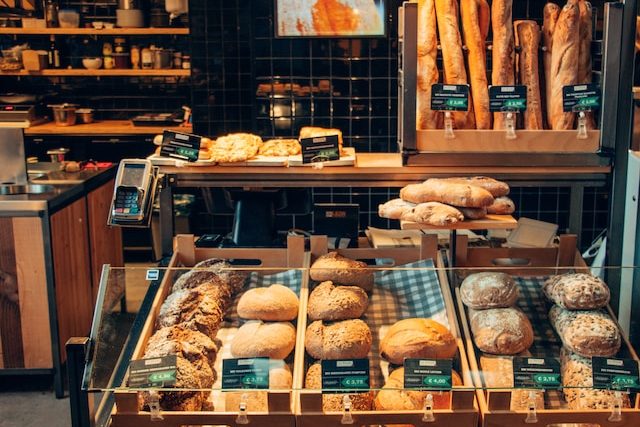
Before we dive deep into the SWOT analysis, let’s get the business overview of Greggs. Greggs is a well-known British bakery chain specializing in savory and sweet products, including pastries, sandwiches, and drinks. Here’s a brief overview of the business:
- Greggs was founded by John Gregg as a single bakery in Gosforth, Newcastle upon Tyne, in 1939. It has since grown to become the largest bakery chain in the UK.
- Greggs is best known for its pastries, especially the sausage roll, which has become an iconic product for the brand.
- The product range includes sandwiches, salads, soups, sweets, drinks, and more.
- In recent years, Greggs has tried diversifying its product range to cater to a broader audience, including introducing vegetarian and vegan products like the Vegan Sausage Roll and Vegan Steak Bake.
- As of 2022, Greggs operates over 2,000 shops across the UK.
- Greggs’ outlets can be found on high streets, shopping centers, retail parks, airports, train stations, and other transport hubs.
- Financial Performance : Total sales grew to £1,513 million in 2022 (2021: £1,230 million), a 23.0% increase on the level seen in 2021. Pre-tax profit for the year increased to £148.3 million (2021: £145.6 million), reflecting strong sales growth in the face of significant cost inflation and the removal of Government pandemic support.
Here is the SWOT analysis for Greggs
A SWOT analysis is a strategic planning tool used to evaluate the Strengths, Weaknesses, Opportunities, and Threats of a business, project, or individual. It involves identifying the internal and external factors that can affect a venture’s success or failure and analyzing them to develop a strategic plan. In this article, we do a SWOT Analysis of Greggs.
SWOT Analysis: Meaning, Importance, and Examples
- Strong Brand Recognition: Greggs is one of the UK’s most recognized and beloved bakery brands. Its substantial brand equity means customers trust and are loyal to the brand.
- Diverse Product Range: While initially known for pastries, Greggs offers various products, from sandwiches to salads and drinks. This diversity caters to a broad spectrum of customer tastes and preferences.
- Adaptability to Consumer Trends: Greggs has demonstrated an ability to adapt to emerging consumer trends. Notable examples include the introduction of healthier food options and the successful launch of vegan products like the Vegan Sausage Roll.
- Expansive Retail Network: With over 2,000 outlets across the UK, Greggs has a wide-reaching presence, ensuring it’s easily accessible to a large population segment.
- Competitive Pricing: Greggs is known for offering quality products at competitive prices, making it an attractive option for value-seeking customers.
- Effective Marketing and Public Relations: Greggs has made headlines with innovative marketing campaigns like the Vegan Sausage Roll launch. These campaigns not only boost sales but also enhance brand visibility and engagement.
- Innovation in Service Delivery: Greggs has embraced technology by introducing its app with loyalty programs and mobile payment options. The company expanded its delivery partnerships to cater to changing consumer habits, especially during the pandemic.
- Dependence on the UK Market: Greggs operates predominantly in the UK, making it susceptible to market-specific risks, such as economic downturns or changes in UK regulations.
- Limited Global Presence: Unlike some competitors who have expanded internationally, Greggs has little presence outside the UK. This limits their growth potential in global markets.
- Perceived as Less Healthy: Greggs has historically been associated with pastries and baked goods, which aren’t always considered healthy options. While they’ve introduced healthier choices, overcoming this perception can be challenging.
- Vulnerability to Commodity Price Fluctuations: As a food retailer, Greggs is exposed to fluctuations in commodity prices (e.g., wheat, dairy). Significant price hikes can impact profitability if not managed efficiently.
- High Street Presence: Many Greggs outlets are situated on high streets. With changing retail trends and a shift towards online shopping, high street footfall has decreased in certain areas, posing challenges.
- Reliance on Physical Stores: Greggs’ business model heavily relies on physical store sales. This can be a limiting factor in an era of increasing digitalization and delivery services.
- Menu Complexity: With an expanding product range to cater to various customer needs, there’s a risk of menu complexity, which can strain operations and confuse customers.
Opportunities
- International Expansion: With a strong brand presence in the UK, Greggs could explore expanding into international markets, tapping into new customer bases and diversifying its revenue streams.
- Enhanced Digital Presence: Greggs can further invest in its digital platforms, introducing online ordering, expanding delivery options, or even exploring subscription models.
- Product Diversification: There’s scope for Greggs to expand its product range further, venturing into categories like evening meals, niche diet-based products (keto, gluten-free), or even branching into beverages more significantly.
- Sustainable Initiatives: With growing consumer emphasis on sustainability, Greggs can introduce more eco-friendly packaging, sustainable sourcing, and further its commitment to reducing carbon footprints, which can resonate positively with consumers.
- Partnerships and Collaborations: Greggs can explore partnerships with brands, celebrities, or influencers to launch exclusive products, enhancing its brand visibility and appeal.
- Expansion of Delivery and Drive-Thru: Building on its existing delivery partnerships, Greggs can further expand these services or even consider setting up more drive-thru outlets, catering to the on-the-go consumer.
- Loyalty and Subscription Programs: While Greggs already has a loyalty program through its app, there’s an opportunity to enhance this further, possibly exploring subscription models for regular customers.
- Health-Conscious Offerings: Building on its introduction of vegan and healthier options, Greggs can further tap into the health-conscious consumer market with more varied health-focused products.
- Pop-Up Stores and Experiential Retail: To boost its brand and reach out to newer audiences, Greggs can set up temporary pop-up stores in various locations or create experiential retail spaces that offer more than just food.
- Intense Competition: The food retail market in the UK is highly competitive, with many brands, both big and small, vying for consumer attention. The rise of artisanal bakeries and niche food outlets also poses a threat.
- Changing Consumer Preferences: The rapidly evolving food industry means consumer tastes and preferences can shift quickly. An increased focus on health, new dietary trends, or emerging cuisines can influence consumer choices.
- Economic Factors: Economic downturns or recessions can impact consumer spending, reducing sales, especially for discretionary items.
- Supply Chain Disruptions: Global events, such as pandemics, geopolitical tensions, or natural disasters, can disrupt supply chains, leading to increased costs or product shortages.
- Regulatory Changes: Changes in food regulations, health and safety standards, or employment laws can impose additional costs or operational challenges.
- Digital Disruption: The continuous growth of online food delivery platforms and meal kit services could divert consumers from traditional bakery outlets like Greggs.
- Rising Costs: Fluctuations in commodity prices, increased wages, or rent hikes can escalate operational costs, squeezing margins.
- Health and Nutritional Concerns: Growing awareness of health and nutrition means products high in sugar, salt, or fats could face criticism, leading to potential sales decline of certain items.
- Physical Retail Decline: The broader trend of declining footfall in traditional high street stores, in favor of online shopping or out-of-town retail parks, can pose challenges for Greggs’ store-based model.
Check out the SWOT Analysis of Global Businesses
Related posts.
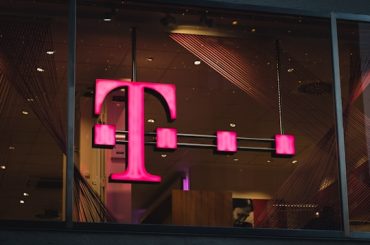
T Mobile SWOT Analysis
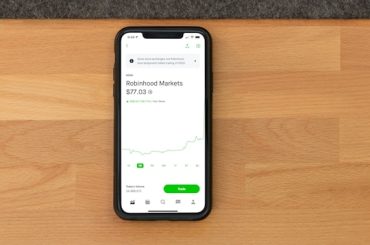
Robinhood SWOT Analysis

Revlon SWOT Analysis
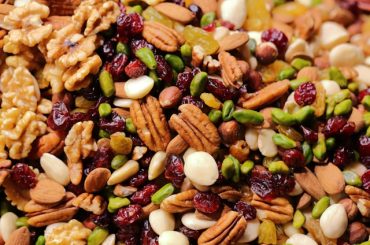
Rebisco SWOT Analysis

Razer SWOT Analysis

Revolut SWOT Analysis
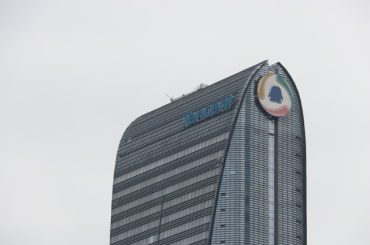
Tencent SWOT Analysis

Telus SWOT Analysis
Type above and press Enter to search. Press Esc to cancel.

Information Age
Insight and Analysis for the CTO

Food on the go: Greggs bakes in digital transformation
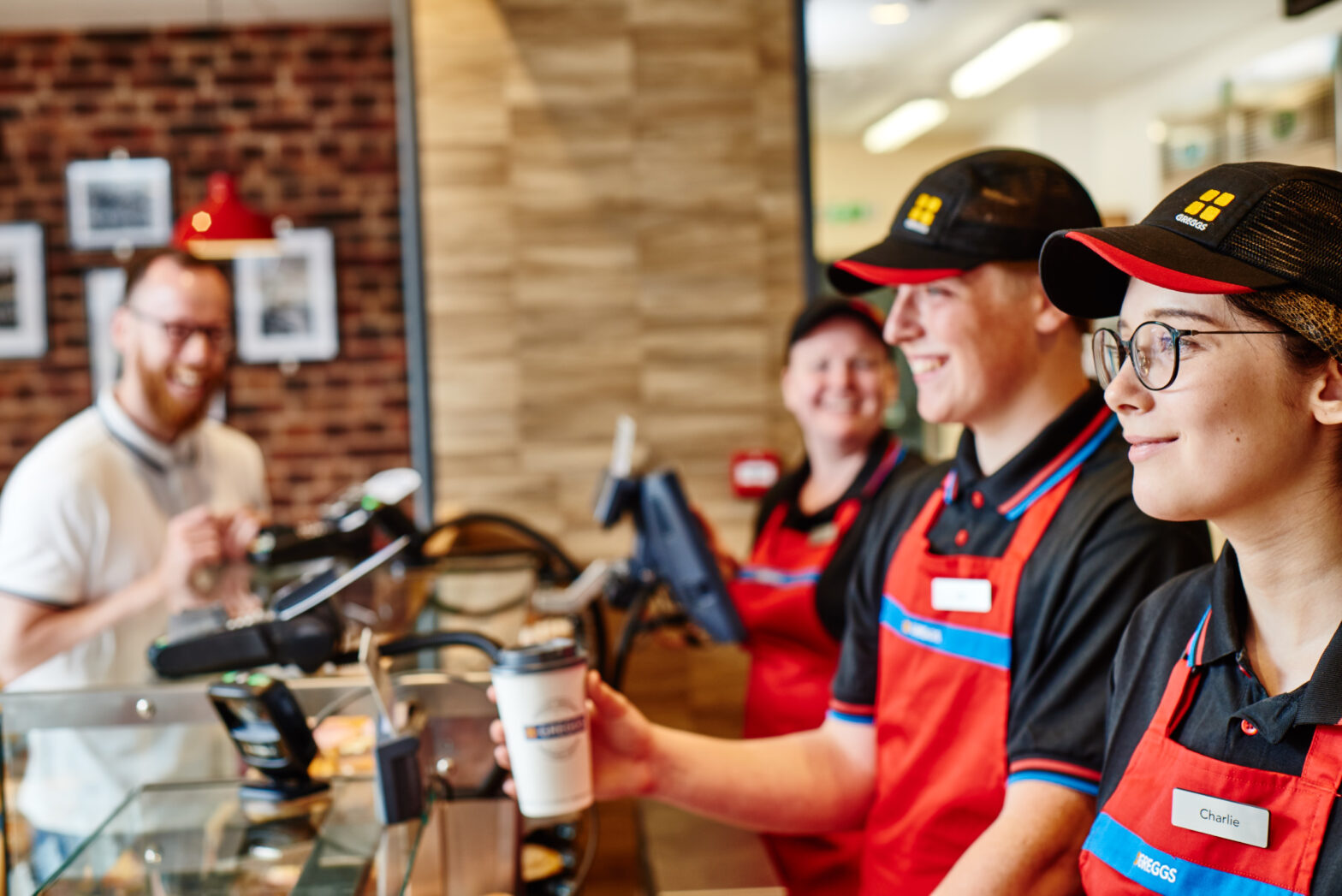
As the largest bakery chain in the UK, with more than 1,700 shops, Greggs is a staple of the British high street. Starting as a single bakery in Newcastle upon Tyne in 1951, it has grown to a nationwide business with a turnover of £894 million.
But in search of further growth, Greggs is keen to shake off its humble bakery heritage as part of a mission to gain market share in the fast-moving food-on-the-go industry. Doing so has required a vast business transformation.
Unlike most food-on-the-go retailers, Greggs has traditionally been a vertically integrated business, with its own manufacturing facilities as well as its own shops. In 2013, its executive team embarked on a technology-enabled change programme that moved Greggs away from its origins as a centralised bakery business, harmonised processes and provided the foundations for growth.
‘We were stretched at the seams,’ says Tony Taylor, IT and business change director at Greggs. ‘You get to the point where your current infrastructure can’t support you anymore. You know that you’re going to have to make some form of a change. The programme has all been about changing the look of the 1,700 shops. We had a variety of different formats, looks and feels but very much a bakery heritage and decided to go with this food-on-the-go journey.’
Simplifying operations
To become a decentralised business, Greggs selected SAP’s business suite on HANA as the ERP basis of its programme to transform, simplify and standardise its operations. Systems integrator Keytree was engaged to oversee and implement multiple deployments over the past three years.
This has included a complete finance systems implementation, new procurement capabilities, the implementation of a customer interaction centre, cloud-based HR application SuccessFactors, source-to-contract requirements using Ariba solutions and, more recently, SAP’s forecast and replenishment solution.
In 2015, Greggs commenced the implementation of the latest release of SAP IS-Retail technology to improve stock forecasting and replenishment, including a completely redesigned shop user interface.
>See also: Digital skills gap: How to prepare a generation for the modern workplace
The latest phase of the transformation programme has involved extensive engagement of both shop and regional management teams at Greggs. The project has aimed to help maximise the efficiency and profitability of the Greggs shop network in order to reduce wastage and improve product availability.
More than 1,500 shops have converted to the new technology, with training delivered to more than 16,000 staff through the SuccessFactors learning management system.
‘We have made huge progress as we transform and centralise the business,’ says Roger Whiteside, Greggs’ chief executive. ‘We are investing over £25 million in processes and systems that will enable us to compete more effectively in the fast-moving food-on-the-go market. We have already seen substantial change throughout our estate as we simplify operations to deliver great-tasting food and a great retail experience.’
Rising to the challenge
Taylor attributes Whiteside’s championing of the transformation, along with others in the operating board, as a key factor in its success and a huge enabler in gaining acceptance for the programme across the organisation.
Such buy-in from the top of the business says to everyone that the executive team is paying attention. ‘If somebody wants to make a change that’s not standard, they have to tell people why because it will go to that operating board as something that will potentially impact us in the future,’ says Taylor.
With regard to the change management aspect in the shops themselves, Taylor says Greggs has taken ‘a fundamentally different approach’ to other transformation programmes in the retail industry.
‘Lots of programmes struggle because you tackle the big things and you can’t see the tangible benefits early, so people become sceptical. Through procurement, we were actually able to start to bring some tangible benefits.’
To get to thousands of people in an easy way, Taylor knew his team needed e-learning solutions that weren’t about ‘going to a location and getting killed by a PowerPoint presentation’ or just getting an email saying this is what’s happening.
Through SuccessFactors, the programme team could engage, measure and deliver training to people when they wanted it. The 17,000 employees in shops were able to complete training on computers in their back office at a time that suited their individual shop.
Taylor’s team also attempted to illuminate the visibility of the transformation programme wherever they could, including through the CEO’s speech at the annual conference, briefing sessions or through dedicated ‘change champions’.
>See also: What does the government’s Digital Strategy mean for the UK tech industry?
‘We built momentum on both training and communication, telling people this is what’s coming and this is what it’s all about,’ says Taylor. ‘When the CEO stands up at our annual conference and talks about the programme, directors mention it in their weekly or bi-weekly briefing notes and it’s mentioned in our annual report, people get used to it and get comfortable with it.’
James Holmes, programme manager for SAP transformation at Greggs, adds, ‘This project has always been ambitious, with so many outlets to be brought onto the system, at a rate of around 100 shops every week. Hitting the 1,500-shop landmark is a real achievement for us.
‘Despite the scope and size of this transformation, we have already seen encouraging results across the programme, and this gives us great confidence to continue working with Keytree on the deployment of the next phase of the programme, looking at production and warehousing in our supply chain.’
Foundation blocks
The main modular aspect of the transformation programme will be completed next year, although it will take a little longer to physically role out the changes.
That’s certainly not the end of Greggs’ transformation to a food-on-the-go retailer, however. This programme, which has grown Greggs’ IT team from 50 to 70 staff, provides the foundation blocks for the company’s continued evolution.
‘Across the country, we need to be able to create the opportunities to grow further,’ says Taylor. ‘We are looking at other opportunities. We opened our first drive-thru in June, and we are piloting click-and-deliver across the country. So we’re exploring a number of other initiatives to put our customers first and to be flexible, but it’s got to be relevant to Greggs as a food-on-the-go operator, not just because the competition are doing it.
‘So the transformation programme has been a foundation that will allow us to explore a number of different growth opportunities. But bedding it in is the most important thing first – rushing off to chase new technologies is not what the desire is here.’
The UK’s largest conference for tech leadership , Tech Leaders Summit , returns on 14 September with 40+ top execs signed up to speak about the challenges and opportunities surrounding the most disruptive innovations facing the enterprise today. Secure your place at this prestigious summit by registering here

Ben was Vitesse Media's editorial director, leading content creation and editorial strategy across all Vitesse products, including its market-leading B2B and consumer magazines, websites, research and... More by Ben Rossi
Related Topics
Related stories.

AI & Machine Learning
How insurtech is using artificial intelligence
Insurance technology (insurtech) is rapidly evolving, allowing for digitalisation of insurance sector processes. Here, we explore the role of AI in this trend
Aaron Hurst

Disruptive Innovation
The top 10 most innovative and disruptive Insurtech companies
There are a number of growing Insurtech companies, with many startups rapidly emerging to disrupt the market.
Rory Bennett

3 jobs in fintech hiring this week
With UK fintechs continuing to attract investment, here are the key factors driving growth in the space, and three fintech jobs being advertised right now
Aoibhinn McBride

6 payments technology companies disrupting the sector
Here are some companies that are making waves in the payments technology space, bolstering transaction processes for businesses

Want a new fintech job? These are the skills employers want now
Here are the most in-demand skills for fintech companies recruiting fresh talent, and some advertised tech vacancies open this week
Jennifer McShane
Press to search


Greggs uses Paragon’s route optimisation software to support business transformation
With the food-on-the-go sector rapidly expanding in the UK, specialists such as Greggs are facing growing pressure on their supply chains to meet changing customer demands.
Greggs has undertaken an ambitious £100 million investment to reshape its supply chain, supporting the transformation from a decentralised traditional bakery business into a centrally-run, food-on-the-go brand that can meet the choice and availability customers demand. The retailer has also expanded beyond its traditional place on the high street to new locations on retail and industrial parks, motorway service stations and travel hubs.
As a result of all these changes, distribution planning has become progressively more complex. Greggs’ team of transport planners uses Paragon’s route optimisation software extensively to simplify the planning process, target efficiency savings and maintain service standards.
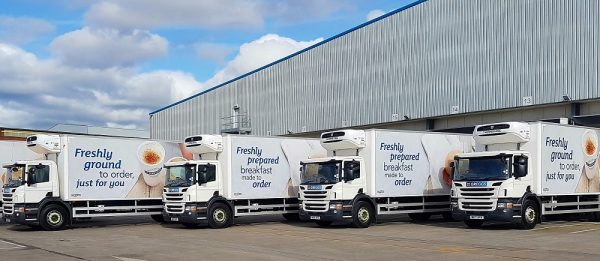
Quick facts:
- UK's leading bakery food-on-the-go retailer
- 1,800 shops serving more than six million customers every day
- 3,500 stores deliveries every day
- 250 temperature-controlled rigid vehicles driven by a team of 600 drivers working across two shifts
- 25 tractor units used for trunking between regional distribution centres
- Time-sensitive access restrictions and strict delivery windows
Benefits reported:
- Simplified the planning process
- Supported business transformation
- Removed almost 900 miles a week from local plans
- Reduced CO2 emissions by around 35 tonnes per year
Related products
Multi depot.
Route optimisation software for operations which have vehicles and drivers at multiple locations and want to simplify their planning process.
Street Level Mapping
Complementary module for operations planning deliveries in dense urban areas and requiring greater precision.
Template "elements/components/form.php" not found
Related resources
Arbor forest products balances service and transport costs with paragon routing software, dubai-based aki group improves productivity and reduces costs with paragon routing software, lf&e uses paragon to meet transport planning demands of pharmaceutical sector, get in touch.
Whether you have questions about our products, our customers or our pricing, contact us and we’ll connect you with one of our experienced team.
+44 (0)1306 732600
Final dates! Join the tutor2u subject teams in London for a day of exam technique and revision at the cinema. Learn more →
Reference Library
Collections
- See what's new
- All Resources
- Student Resources
- Assessment Resources
- Teaching Resources
- CPD Courses
- Livestreams
Study notes, videos, interactive activities and more!
Business news, insights and enrichment
Currated collections of free resources
Browse resources by topic
- All Business Resources
Resource Selections
Currated lists of resources
Edexcel A2 Business Unit 4a - Greggs Case Study Analysis

16th March 2014
- Share on Facebook
- Share on Twitter
- Share by Email
The Greggs plc case study toolkit can be ordered online here or by downloading and sending us this printable order form.
Mark's analysis of the SuperDry / SuperGroup case study from 2013 exam sittings can be obtained for free by completing this short online form - submit your details and the download details will be sent to you.
Jim co-founded tutor2u alongside his twin brother Geoff! Jim is a well-known Business writer and presenter as well as being one of the UK's leading educational technology entrepreneurs.
Our strategy
We've been around for 85 years building a reputation for offering great quality, freshly prepared food at low prices with great service..
We are a modern food-on-the-go retailer and a much-loved and trusted brand that is for everyone and available to serve our customers wherever, whenever and however they choose. With ownership of our supply chain, over 2,450 shops nationwide, we are in a unique position to make great tasting, freshly prepared food accessible to everyone. We have more than 32,000 amazing colleagues, working together to provide our customers with the best experience, offering fast and friendly service, day in and day out.
Business model
Manufacturing.
We make great tasting, freshly prepared food that customers can trust, in our own manufacturing centres of excellence.
We move products from our manufacturing sites to our shops ourselves, helping to keep prices as low as possible.
We have more than 32,000 amazing colleagues, providing our customers with the best experience every day.
Customer channels
With over 2,450 shops across the UK including 500 with franchise partners, delivery and wholesale partnerships and Click + Collect, we can serve our customers where, when and how they choose.
Customer relationships
Our Greggs App and CRM system allow us to build long-term connections with our customers and reward their loyalty.
View our business model
Strategy in action
While greggs has enjoyed tremendous success in recent years as we worked towards becoming the customers’ favourite for food-on-the-go, our journey is far from over..
We have an ambitious plan to double Greggs’ sales in the next five years and while the fundamental strategic pillars of our business model have not changed, we are continually learning and adapting and have identified four key growth drivers which will become the focus of our strategy to reach our full potential in the years ahead.
Our four key drivers of growth
Growing the greggs estate.
Through new shop openings, relocations and the next generation of shop refits, our ambition is to reach significantly more than 3,000 shops.
Extending trade into the evening
Through extending our trading hours, exciting new additions to our menu and leveraging our existing customer channels, we are able to compete more effectively for food-on-the-go sales in the evening.
Digital channels
Through our digital channels, including delivery and Click + Collect, we are able to compete more effectively at all times of day.
Broadening customer appeal and driving loyalty
Through timely, effective customer communication via our new Greggs App, website, social media and CRM system, we can communicate with our customers and be a brand considered by more people when they need food-on-the-go.
Investing in our supply chain and technology for a bigger business
Over recent years, we have transformed our supply chain and technology infrastructure to create a centralised food-on-the-go business model. Our ambition to double sales revenues will require significant investment in manufacturing and logistics to increase capacity. We’ve made better use of space and invested heavily in centralised automation, delivering a step-change improvement in the quality of our products and our supply chain cost structure. This has also allowed us to create a template on which we can build additional capacity and continue to grow as a business.
Our culture
Our people are what makes our business successful. We aim to provide them with a great place to work, where they feel valued and have the opportunity to fulfil their potential. Our values commit us to being friendly, inclusive, honest, respectful, hardworking and appreciative.
Our sustainability commitments
It’s our duty as a responsible business to stand for more than just profit. In February 2021, we launched The Greggs Pledge, declaring ten commitments based on the UN’s Sustainable Development Goals to help people, protect the planet and work with our partners to change the world for the better.
Our stakeholders
Maintaining good relationships with our essential stakeholders is key to what we do. Our stakeholder family includes customers, colleagues, investors, suppliers and, of course, the communities that we serve.
Find out more about us
Our history, want to know more.
Head over to our FAQs page to find out further information.

Greggs Plc – Strategy, SWOT and Corporate Finance Report
- Published: June 2023
- Report Code: ML1168907SA
Added to Saved | Remove
Greggs Plc – Strategy, SWOT and Corporate Finance Report, is a source of comprehensive company data and information. The report covers the company's structure, operation, SWOT analysis, product and service offerings and corporate actions, providing a 360˚ view of the company.
Key Highlights
Greggs Plc (Greggs) is a bakery chain operator that offers bakery products, breakfast items, beverages, snacks, and salads. The company's product portfolio includes sandwiches, pasta, salads and soup, breads and rolls, platters, cakes and buns, muffins, doughnuts, and biscuits. It also offers products with lower fat, calorie and salt contents that provide healthy diet and nutritional values to its customers. It conducts business operations through retail shops and B2B market. The company's stores are located in retail parks, shopping centers, industrial estates, office parks, travel hubs, petrol forecourts, motorway service stations, train stations, airports and tube stations. It also provides frozen bakery products to its wholesale customers. Greggs is headquartered in Newcastle upon Tyne, England, the UK.
– Large number of easy-to-grasp charts and graphs that present important data and key trends
Reasons to buy
Table of contents, list of tables.
Table 8: Greggs Plc: Strategy and Operations
List of Figures
Table 10: Greggs Plc: Strategy and Operations
- Site: $ 350 (A$7,290.07 AUD) -->
- Single User: $ 175 (A$7,290.07 AUD) -->
- Enterprise: $ 525 (A$7,290.07 AUD) -->
Discounts available for multiple purchases.
[email protected] +44 20 7947 2960
Saved reports
Enquire before buying for greggs plc – strategy, swot and corporate finance report.
Please complete the form below, you will then be provided immediate access to the pages you have requested.
Your data will never be shared with third parties, however we may send you information from time to time about related third party products that may be of interest to you. You may contact us at any time to opt-out.
MarketLine uses the information in this form to provide you with occasional updates on new products and reports in accordance with your preferences. You are in control of the communications you receive from us and you can update your preferences anytime to make sure you are receiving information that matters to you. Please check our Privacy Policy to see how we protect and manage your submitted data.
The client services team will arrange delivery of your sample pages. Please contact client services for any further information: [email protected]
Enquire before buying Greggs Plc – Strategy, SWOT and Corporate Finance Report
Sign up for free research alerts..
Error: Contact form not found.

Greggs: an agile approach to strategy & business model thinking
Posted on: August 7, 2019 in Agile Thinking , Growth
John Gregg founded his bakery business in 1939, selling eggs and yeast from his bicycle in Newcastle. The business grew, and his son Ian joined his father and mother, selling pies from his van to miners’ wives. They opened their first shop in Gosforth in 1951.
When John died in 1964, the bakery was taken over by Ian, and major expansion began, including the acquisitions of other bakeries such as the Bakers Oven chain from Allied Bakeries in 1994.
Greggs grew to be the largest bakery chain in the UK, home of the bacon sandwich and a coffee for two quid special offer which, disappointingly, is now £2.10 (a friend told me, honestly), famous for pies and pasties and everything you firmly resolved on December 31 would never touch your lips again.
A couple of years ago, Greggs fell victim to adverse PR about its product range and customer base. Oh how the Prêt crowd sniggered into their avocado and crayfish salads. Yet plucky old Greggs just got its head down and kept growing. ‘It’s a northern thing’ no longer serves as an explanation. The patronising notion that Greggs’s popularity is inversely proportional to the nation’s economic fortunes also fails to explain its steady expansion.
Today Greggs generate £1m a week from sales of coffee. It has repositioned the brand from an ordinary bakery-to-take-home to a high growth food-on-the-go entity, meeting changing customer demands and evolving food culture.
A new strategy was introduced in 2013 under CEO Roger Whitehouse, formerly Head of M&S Food, which focused on four pillars: Great tasting freshly prepared food; best customer experience; competitive supply chain; first class support teams.
Whitehouse introduced a ‘restless dissatisfaction’ approach to compliment the traditional business values, ensuring the business would never stand still after recovering from a period of stagnation. He implemented some radical changes, including closing the in-store bakeries, and introducing the ‘Balanced Choice’ range of products with less than four hundred calories, healthier options to the traditional product range.
And it’s worked. Having launched the first vegan sausage roll in January, last week the company announced a 50% rise in profits to £40.6m in the first half of 2019. The business is handing shareholders a £35m special dividend after total sales rose 14.7% to £546m.
In 2016, Greggs weren’t in the takeaway breakfast market but now only McDonalds sells more takeaway breakfasts. With a Fairtrade Expresso, it has overtaken Starbucks to become the third-largest takeaway coffee seller, behind Costa and McDonalds, while only Tesco sells more sandwiches.
So what are the lessons from the success of Greggs changing its business strategy and model that we take into our startup thinking?
1. Be agile in how you connect with customers
Greggs expects to pass 2,000 outlets this year, 65% are on high streets, with the remaining 35% located in retail and office parks and in travel locations such as railway stations and petrol forecourts. The aim is to change the emphasis of the business so that it is 60% non-high street by the time it has 2,500 shops.
Part of this is having many of its stores open earlier and close later, in order to target those going to and coming back from work, expanding its breakfast menu to suit, and with ‘Greggs à la carte’ stores to open late to 9pm to lure evening takeaway diners.
As well as its new drive-through locations, the company is trialing a click-and-collect service, as well home and office delivery by Just Eat and Deliveroo. They aim to integrate click-and-collect and delivery services with the company’s Greggs Rewards app, which offers free drinks and birthday treats.
Greggs has previously failed with new ideas such as Greggs Moment , a coffee shop-style outlet with seating, and the Greggs Delivered service, which is only available in Newcastle and Manchester city centres, three years after it launched. However, the business is now at a scale where it can experiment without too much risk.
Takeaway: Greggs route to market strategy is to based on expanding their reach to enhance customer convenience, a ‘fish where they swim’ strategy, reducing the barriers between themselves and their customers, uplifting the customer experience and making the ability to connect and purchase convenient.
2. Build your brand to face your market
Greggs has in recent years persistently bucked the wider trend on UK high streets, where most retailers are struggling to compete as sales shift online and the cost of running stores rises.
In 2013, Greggs began to transition out of the bakery market with the reasoning that it couldn’t compete with supermarkets, switching to focusing solely on the ‘food on the go’ market after discovering that 80% of its business was with that market. They stopped selling bread in 2015.
Greggs has worked hard at getting consumers to think about it as a food-on-the-go chain, developing ideas such as online ordering for collection and home delivery, developing strategic partnerships with their supply chain to focus on the four key pillars of their strategy.
They are more in touch with where the customers are today. It has managed to cater to new markets without being overly ambitious. The builder can still come off the building site and get a hot pasty, but there are also salads. The decor is still recognisable even if it has been upgraded and the older traditional customers still feel comfortable.
Takeaway: Many businesses want profit as their objective. But if you only focus on short-term wins and results, you get distracted from doing the work required to build the skills you need to grow and scale, and it’s the ability to scale that matters. The process is more important than the outcome at early stages of a change of strategy. Focus on getting good before you worry about getting big.
3. Look forwards, not backwards with your product offering
Greggs sells 1.5 million sausage rolls a week but created the new vegan option due to public demand after an online petition signed by 20,000 people. In recent years Greggs has been innovating within its product range to appeal to a broader range of customers. Its ‘Balanced Choice’ healthy eating range, introduced in 2014, offers options including wraps and salads, all below 400 calories. It also sells gluten-free and several vegan lines.
The company also believes it can take advantage of rising demand for food ‘customisation’, driven by allergies and ‘food avoidance’ preferences, and its stores now make sandwiches to request.
One in eight new customers have bought a vegan sausage roll in 2019, which has overtaken doughnuts and other pastries to become a bestseller. The traditional sausage rolls remain at number one – with its 96 layers of light, crisp puff pastry – but there are more vegan products in development, including a vegan doughnut. It’s worked, such that Ginsters released their own vegan product for the first time in its 52-year history.
Takeaway: Greggs has been bold in its response to the adverse publicity on its offering and changing food culture. Aligning your product strategy with a focused brand image and route to market is core to any business model.
4. Be clear about your marketing message & tone of voice
Before the Greggs vegan sausage rolls went on sale, TV presenter Piers Morgan sent out a tweet: Nobody was waiting for a vegan bloody sausage, you PC-ravaged clowns. The tone of the company’s response: Oh hello Piers, we’ve been expecting you – friendly but with a slight edge, was perfectly attuned to the ironic, self-confident marketing Greggs has adopted, a James Bond-inspired, droll putdown that was the perfect riposte.
Their hilariously portentous launch video – part of a build-up that parodied the release of a new iPhone model with journalists sent vegan rolls in mock iPhone packaging and stores sold sausage roll phone cases – meant that for days Twitter was engulfed with people talking about a £1 bakery product.
The vegan sausage roll campaign, officially launched to support the Veganuary campaign that encouraged people to give up animal products for a month, followed other memorable promotions include a Valentine’s Day campaign offering ‘romantic’ £15 candlelit dinners in Greggs shops, and a spoof ‘Gregory and Gregory’ event, and one faux pas: a 2017 advent calendar tableau of a sausage roll in a manger. After complaints Greggs apologised and reprinted with a different scene featuring Christmas muffins.
Takeaway: Greggs found its distinctive marketing style in 2012, when it saw off then-chancellor George Osborne’s proposed ‘pasty tax’ on hot takeaway food. Since then it has been consistent in its purposeful, structured and memorable content driven communication strategy, making the brand relevant to its target audience and differentiating its offering in an increasingly competitive market to reposition the brand.
5. Don’t let your business model become stale
Innovation can be about efficiency. Look at Ikea, and The Billy bookcase. It’s a bare-bones, functional bookshelf if that is all you want from it. The Billy isn’t innovative in the way that the iPhone is innovative. The Billy innovations are about working within the limits of production and logistics, finding tiny ways to shave more off the cost, all while producing something that does the job. It demonstrates that innovation in the modern economy is not just about snazzy new technologies, but also boringly efficient systems.
The Greggs shop environment has been improved and significant investments made in logistics and delivery systems to make them more efficient and scalable. In-store ordering moved to a centralised forecast and replenishment system rather than relying on shop teams filling in manual order forms, which resulted in order accuracy and improved availability for customers.
All shops are on a refurbishment programme (every seven years) to ensure they stay looking bright and welcoming. In-store point of sale and window displays remain key to Greggs’ marketing strategy, however, a loyalty app was also introduced.
Takeaway: innovation in Greggs is about efficiency, economy and effectiveness, searching for ways to make their products even better and affordable for their target market. A ‘back to basics’ focus on the business model reflects the culture and humility of the brand. Combined with brave decision making to implement change and execution in a consistent, simple and continuous manner has delivered the results.
6. Ensure your folks keep clear heads
Amidst the hullaballoo and the fury of the frantic activity in the coming and going of customers at busy times, staff have to keep a clear head. In the heat of the moment, they cannot get caught up in the intensity and frenzy. Resilience in times of peak demand is needed to keep the customer experience as fresh and stimulating as the steak bakes.
When you go to a Greggs, the staff are so engaged in what they do its untrue, they are like whirling octopus serving customers, and they do it with good humour, bantering with regulars, enjoying the success of seeing returning customers, before going again.
With 10% of profits going to the Greggs Foundation to help fund Breakfast Clubs for children and over £1m raised annually for Children in Need, the vegan pastry has helped change the perception of Greggs, but fundamentally it’s a people business, about delivering service, experience and the community it operates.
Takeaway: So, focused on a simple, core value proposition – reasonable quality food at reasonable prices, consistently produced and scaled – but the fundamental premise is to make customer experience the brand differentiator.
Many takeout food companies are head-on competition to Greggs, but due to its focused marketing strategies highlighting choice, quality, nutrition & easy access, the company is able to create sustainable advantage.
Changing lifestyles, changing eating habits and increasing health awareness factors are affecting the growth of the companies in this industry. Greggs has set its strategy from a customer’s point of view and with customer-based insights, to ensure the business model is as robust as it can be.
Adopt Greggs’ agile approach to strategy and business model thinking, to focus on the horizon and hold your vision. Do something everyday to move your business forward, and that makes you stand out from the crowd. A sheep has never stood out from another sheep, so don’t follow the herd blindly. People will take notice.
get in touch today
You are using an outdated browser. Please upgrade your browser to improve your experience.
Greggs Plc - Strategy, SWOT and Corporate Finance Report
- Table of Contents
- Description
- Related Reports
- Detailed information on Greggs Plc required for business and competitor intelligence needs
- A study of the major internal and external factors affecting Greggs Plc in the form of a SWOT analysis
- An in-depth view of the business model of Greggs Plc including a breakdown and examination of key business segments
- Intelligence on Greggs Plc's mergers and acquisitions (MandA), strategic partnerships and alliances, capital raising, private equity transactions, and financial and legal advisors
- News about Greggs Plc, such as business expansion, restructuring, and contract wins
- Large number of easy-to-grasp charts and graphs that present important data and key trends
- Gain understanding of Greggs Plc and the factors that influence its strategies.
- Track strategic initiatives of the company and latest corporate news and actions.
- Assess Greggs Plc as a prospective partner, vendor or supplier.
- Support sales activities by understanding your customers' businesses better.
- Stay up to date on Greggs Plc's business structure, strategy and prospects.
Company Snapshot Greggs Plc: Company Overview Greggs Plc: Overview and Key Facts Greggs Plc: Overview Greggs Plc: Key Facts Greggs Plc: Key Employees Greggs Plc: Key Employee Biographies Greggs Plc: Major Products and Services Greggs Plc: Company History Greggs Plc: Management Statement Greggs Plc: Locations and Subsidiaries Greggs Plc: Key Competitors Greggs Plc: Company Analysis Greggs Plc: Business Description Greggs Plc: SWOT Analysis Greggs Plc: SWOT Overview Greggs Plc: Strengths Greggs Plc: Weaknesses Greggs Plc: Opportunities Greggs Plc: Threats Greggs Plc: Recent Developments Greggs Plc: News and Events Summary Greggs Plc: Business Expansion Greggs Plc: Strategy and Operations Appendix Contact Us Methodology About MarketLine List of Tables Table 1: Greggs Plc: Key Facts Table 2: Greggs Plc: Key Employees Table 3: Greggs Plc: Company History Table 4: Greggs Plc: Locations and Subsidiaries Table 5: Greggs Plc: Key Competitors Table 6: Greggs Plc: News and Events Summary Table 7: Greggs Plc: Business Expansion Table 8: Greggs Plc: Strategy and Operations
Allegion Plc - Strategy, SWOT and Corporate Finance Report
Barclays plc - strategy, swot and corporate finance report, beazley plc - strategy, swot and corporate finance report, senior plc - strategy, swot and corporate finance report, segro plc - strategy, swot and corporate finance report, glencore plc - strategy, swot and corporate finance report, research assistance.

Learn how to effectively navigate the market research process to help guide your organization on the journey to success.
Other tasks
- Printer format
- Order by fax
- Currency converter
Request a Free Sample
Samples provide examples of tables, charts, and topics included in this report. Your sample will be emailed to the address provided.
MarketResearch.com, Inc. is committed to protecting and respecting your privacy, and we’ll only use your personal information to administer your account and to provide the products and services you requested from us. From time to time, we would like to contact you about our products and services, as well as other content that may be of interest to you. If you consent to us contacting you for this purpose, please tick below to say how you would like us to contact you:
You can unsubscribe from these communications at any time. For more information on how to unsubscribe, our privacy practices, and how we are committed to protecting and respecting your privacy, please review our Privacy Policy.
By clicking submit below, you consent to allow MarketResearch.com, Inc. to store and process the personal information submitted above to provide you the content requested.
- Media centre
- Resources library
- Campaign materials

Greggs case study: building back better with new Fairtrade commitments
Greggs are a long-standing and unique partner with Fairtrade in food-on-the-go retail.
Greggs and Fairtrade: a success story on-the-go
The partnership started in 2006 when Greggs introduced Fairtrade coffee. It has since gone from strength to strength.
Read the interview with Malcolm Copland, Greggs’ commercial director.
Greggs’ Fairtrade commitments now include:
- Coffee beans
- Apple juice
- Orange juice
- Sugar sticks
- Sugar syrup
- Hot chocolate
Over the last 17 years, Greggs have generated over £6.1 million in Fairtrade Premium for farmers and workers across their supply chains, from sales of coffee, tea, hot chocolate, fruit juice, sugar, cookies, and bananas. In 2021 alone, Greggs generated £1m in Fairtrade Premium for farmers and workers.
The Greggs Pledge

Greggs’ commitment in 2021 to sourcing its chocolate from Fairtrade forms part of the company’s sustainability plan, The Greggs Pledge. This pledge supports Greggs’ commitment to sourcing sustainably and having a robust Responsible Sourcing Strategy in place by 2025.
Start a conversation. They’re nice people at Fairtrade. Malcolm Copland, Greggs’ Commercial Director
The pledge, launched in February 2021, sets out the company’s 10 commitments to help make the world a better place by 2025. These commitments are aligned with the ambitions of the United Nations Sustainable Development Goals (SDGs).
This has a hugely positive impact for cocoa farmers as it supports improved household income, helps track climate change, and strengthens women’s empowerment.
Interview with Malcolm Copland, Commercial Director at Greggs
Malcolm Copland, Commercial Director at Greggs, spoke to Fairtrade Foundation’s Will Browning, Head of Partnership Development, about the success of the partnership.
Will: Can you tell us how things have been for Greggs during the pandemic and about your decision to go ahead with your commitment despite the bleak environment? Malcolm: When it came to the values of the business, protecting our people was key, but we also wanted to rapidly progress with some of the plans we had in place and the work that we were doing with Fairtrade. It was important for us to accelerate the plans into chocolate. We were delighted to be able to do that for our supplier partners. Will: Why did Greggs first start working with Fairtrade? Malcolm: It was very much about our values, particularly around providing quality products and doing the right thing as a business. At the time, we were entering into the coffee market and we wanted to ensure that we could deliver something back in the supply chain. Because it was an independent certificate, Fairtrade enabled us to demonstrate that we were treating farmers fairly. And that’s why the certification was very important to us; because it reflected the values of the Greggs business, developed 86 years ago.
Through the Greggs Foundation with our breakfast clubs and what we do within the communities where we operate in the United Kingdom, there was a great synergy. Will: What you are most proud of since you first started out on your Fairtrade journey? Malcolm: I’m proud of being Fairtrade’s strategic partner for food-on-the-go when it comes to Fairtrade Fortnight. I’m also proud of working on collaborative marketing campaigns to highlight the benefits of Fairtrade to our customers and communities.
The things that personally have touched me, are that we’ve had farmers coming into Greggs. They have met our retail teams and our Board.
I remember a couple of female farmers talking about what Fairtrade has meant to their communities and to them personally – in terms of the social equity. And how it has transformed their lives and the lives of their families. That was important to us to hear first-hand. And I think has really impacted us very strongly in terms of doing more with Fairtrade across more categories as well.
It makes the hairs at the back of my neck stand up thinking of how impactful it was and how it touched so many people. Malcolm Copland
The second highlight was when our retail team went to meet some of the farmers. We then brought the story back into the Greggs annual conference. Seeing on the big screen the story of the team meeting the farmers and listening to what Fairtrade meant to them. I really don’t think there was a dry eye in the house.
And to this day it makes the hairs at the back of my neck stand up thinking of how impactful it was and how it touched so many people. These things have made such a big difference in terms of making it real for people. These things have made such a big difference in terms of making it real for people. Will: In 2021, Greggs launched The Greggs Pledge, which includes 10 commitments to make the world a better place by 2025 and beyond. Which of these commitments does Greggs’ partnership with Fairtrade contribute to?
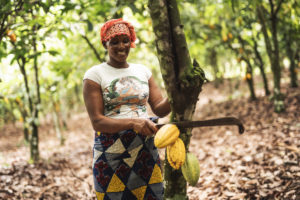
Malcolm: The pledge is very much about our commitment to the planet and communities. We publish our progress against our 10 commitments every year. Fairtrade, we think is key to a number of them. We are committed to growing breakfast clubs and supporting our communities.
Equally, on what Fairtrade does – our coffee commitment means farmers are better equipped to put food on the table for their families. The commitment to reducing food waste is another. Working with our partners across the Fairtrade commodities is key for us in terms of efficient supply chains and ensuring that there’s less wastage. Our commitment to carbon neutral is key and we are collaborating with all of our partners on that. And I think that when we look at building shops in the future, we want our customers to be immersed as well. The shops of the future will enable us to communicate more about Fairtrade. Finally, embracing diversity. We talked already about social equity, the work we’re doing with female farmers, on empowerment and education. That for us is very, very important within Greggs and in our supply chain. All of this goes into our commitment on sustainable procurement as well. Will: What would you like to say to farmers in your Fairtrade supply chains? Malcolm: First a thank you. Thank you for the dedication they have to their profession. They’re obviously working very, very hard to develop themselves and to reinvest back into the communities and back into the profession as well.
Higher farmer standards are fantastic, it means a better-quality product for us. And it also means that we have a better understanding of the supply chain in terms of our carbon footprint.
Their hard work is very much appreciated. Will: How would you like to see the partnership with Fairtrade evolve in the future? Malcolm: Both of our strategies are embracing initiatives on specific themes such as climate, social equity, right to livelihood – which can strengthen the brands’ sustainable sourcing goals. Also to continue to develop a wider impact to ensure a just transition to a low carbon society across our complete supply chain. And making sure the farmers and growers associated are involved in carbon reduction and remain resilient to climate change. Will: And finally, what would you like to say to the rest of your industry about Fairtrade and working with Fairtrade? Malcolm: I think that it would be a great thing to start the conversation with Fairtrade. To really understand the certification and the process. And beyond the certification, in terms of the strategy of where Fairtrade is going beyond 2025 and how that that can support them in their journey, and their strategy.
So, start a conversation. They are nice people at Fairtrade.
Article correct as of July 2022.

Tate & Lyle: Fighting child labour with Fairtrade
Get in touch.
This page is currently under maintenance.
We apologise for any inconvenience caused.
To provide the best experiences, we use technologies like cookies to store and/or access device information. Consenting to them allow us to process data such as browsing behaviour on this site.

IMAGES
VIDEO
COMMENTS
Adopt Greggs' agile approach to strategy and business model thinking, to focus on the horizon and hold your vision. Do something everyday to move your business forward, and that makes you stand out from the crowd. A sheep has never stood out from another sheep, so don't follow the herd blindly. People will take notice.
This information concludes that Greggs is an example of task culture. The rationale behind this statement is that the organization is divided into departments, i.e., teams, and each of them is expected to solve issues within its responsibility area. All the teams and their members join their efforts to contribute to the business development.
Here is the SWOT analysis for Greggs. A SWOT analysis is a strategic planning tool used to evaluate the Strengths, Weaknesses, Opportunities, and Threats of a business, project, or individual. It involves identifying the internal and external factors that can affect a venture's success or failure and analyzing them to develop a strategic plan.
The arguable beginning of Greggs' digital transformation journey was 10-12 years ago, when the business set out, in Taylor's words, to transition to a "modern food on the go" business. At the time, Greggs had "well over a thousand" individual shops - it now has more than 2,300 - and Greggs wanted a consistent look and feel from ...
According to the Food-To-Go (FTG) market it has kept 10.7% shares of occasions and that makes Greggs a dominating company over others (kamcity, 2022). John Robson Greggs was a British businessman ...
Greggs CASE STUDY: CONSUMER QUICK STATS •£1 billion annual revenue •Founded in 1939 •Approximately 20,000 employees •18,000+ retail outlets ... the business change program. THE SOLUTION The digital transformation replaces a broad range of finance procedures including the management of contracts, suppliers, POs, and invoicing; plus ...
A PR machine. Last year, an online petition by Peta was signed by 20,000 people, calling on Greggs to produce a vegan version of its bestselling sausage roll. As well as this growing demand for vegan options on the high street, Greggs also spotted a good opportunity for publicity, using the item's launch to generate awareness and further sales.
Unlike most food-on-the-go retailers, Greggs has traditionally been a vertically integrated business, with its own manufacturing facilities as well as its own shops. In 2013, its executive team embarked on a technology-enabled change programme that moved Greggs away from its origins as a centralised bakery business, harmonised processes and ...
CASE STUDY: GREGGS Greggs uses Paragon to support business transformation About Greggs Greggs is the UK's leading bakery food-on-the-go retailer with over 1,800 shops nationwide, serving over six million customers a week. Greggs has undertaken an ambitious £100 million, five-year investment to reshape its supply chain.
Greggs uses Paragon's route optimisation software to support business transformation. With the food-on-the-go sector rapidly expanding in the UK, specialists such as Greggs are facing growing pressure on their supply chains to meet changing customer demands. Greggs has undertaken an ambitious £100 million investment to reshape its supply ...
16th March 2014. Share : Mark Tottman's superb in-depth analysis of the Edexcel Unit 4a Exam Case Study on Greggs plc is now available for purchase and immediate dispatch. Mark has continued to use the popular and successful format from previous case study analyses, dissecting the stimulus material on Greggs to provide students and teaching ...
Each supported by a real-world case study, these include ANSOFF matrix, Price-Quality-Strategy model, Stage-Gate model, Service Profit Chain and many more. Authored by a leading global market researcher with a background working on over 3,000 different research projects, The Business Models Handbook is an invaluable resource for any student or ...
Over recent years, we have transformed our supply chain and technology infrastructure to create a centralised food-on-the-go business model. Our ambition to double sales revenues will require significant investment in manufacturing and logistics to increase capacity. We've made better use of space and invested heavily in centralised ...
Greggs Plc (Greggs) is a bakery chain operator that offers bakery products, breakfast items, beverages, snacks, and salads. The company's product portfolio includes sandwiches, pasta, salads and soup, breads and rolls, platters, cakes and buns, muffins, doughnuts, and biscuits. It also offers products with lower fat, calorie and salt contents ...
being a national business. During the challenging trading conditions of 2011, Greggs achieved record sales of £ 701 m, a rise of 5.8 per cent, with pre-tax profi t (before exceptional items) rising 1.1 per cent to £ 53.1 m. The problem Greggs was launching a new product in its high-street shops — a range of fl avoured doughnuts.
Greggs continues to experience substantial growth opportunities and has a proven business model. The company's 2023 preliminary results showed strong growth, with like-for-like sales increasing by ...
With over 1,800 shops, and 20,000 employees serving millions of customers each week, Greggs is the UK's leading bakery food-on-the-go retailer. We have recently diversified our growth strategy to transform Greggs from a traditional bakery business into a modern, attractive food-on-the-go retailer.
Adopt Greggs' agile approach to strategy and business model thinking, to focus on the horizon and hold your vision. Do something everyday to move your business forward, and that makes you stand out from the crowd. A sheep has never stood out from another sheep, so don't follow the herd blindly. People will take notice.
While Greggs has enjoyed tremendous success in recent years as we sought to become the customers' favourite for food-on-the-go, our journey is far from over. We have an ambitious plan to double Greggs' sales in the next five years and while the fundamental strategic pillars of our business model have not changed, we are continually learning ...
A study of the major internal and external factors affecting Greggs Plc in the form of a SWOT analysis; An in-depth view of the business model of Greggs Plc including a breakdown and examination of key business segments; Intelligence on Greggs Plc's mergers and acquisitions (MandA), strategic partnerships and alliances, capital raising, private ...
Director and by 1984, with 261 Greggs shops across 4 divisions, the business was floated on the Stock Exchange (LSE: GRG). The rest of the decade saw expansion into the Midlands, Wales and North London. In 1987, Ian Gregg launched the Greggs Trust (now the Greggs Foundation), a registered charity to help
The decision to buy. Like all of the companies that end up in the UKVI model portfolio, Greggs has a long history of profitable dividend growth.In fact, until 2013 it had grown the dividend every ...
Hot chocolate. Black tea. Mint tea. Bananas. Over the last 17 years, Greggs have generated over £6.1 million in Fairtrade Premium for farmers and workers across their supply chains, from sales of coffee, tea, hot chocolate, fruit juice, sugar, cookies, and bananas. In 2021 alone, Greggs generated £1m in Fairtrade Premium for farmers and workers.